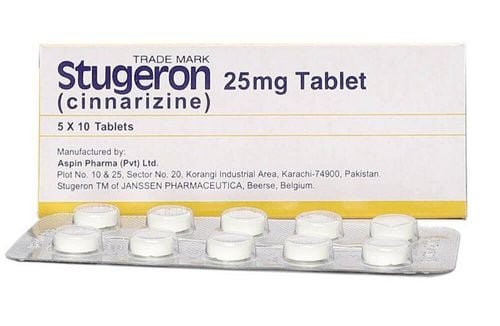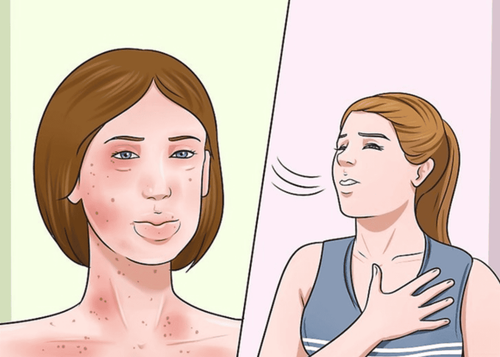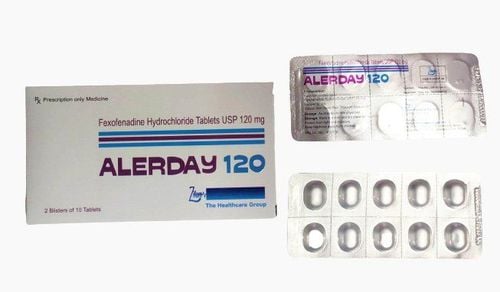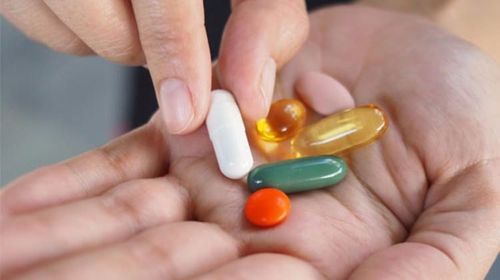This is an automatically translated article.
The article was professionally consulted with Doctor Vo Ha Bang Suong - General Internal Medicine - Department of Medical Examination & Internal Medicine - Vinmec Phu Quoc International General Hospital.Antihistamines H1 work to reduce the state of rash, urticaria, nasal allergies. In addition, some drugs also have anti-motion sickness effects due to their CNS depressant effects, mild sedation, and relief of vestibular disorders, dizziness and nausea.
1. What is an antihistamine?
Histamine is one of the mediators in anaphylaxis and allergic reactions. Histamine is found in tissues throughout the body, but its distribution is uneven. Histamine is most abundantly stored in mast cells in tissues and in basophils. Therefore, histamine is mainly found in lung, intestinal, and skin tissues where mast cells appear to be relatively abundant.Antihistamines bind to histamine receptors on the cell surface. There are four types of histamine receptors in the body (H1-H4), of which H1 and H2 appear most commonly. Histamine H1 receptors are present in many cell types, including respiratory and vascular smooth muscle cells, endothelial cells, epithelial cells, eosinophils, and neutrophils. Although these receptors bind to histamine, these receptors can also signal without the need for histamine to bind to the cell surface. There is a balance between the active and inactive forms of this receptor. The presence of histamine stabilizes the active form of the receptor, while antihistamines stabilize the inactive form of the receptor. From this, it can be seen that the H1 antihistamines act as reverse agonists. Loratadine is metabolised in the liver, while cetirizine, desloratadine and fexofenadine are largely unchanged. Cetirizine is excreted in the urine and fexofenadine is excreted in the feces. Dosage reduction should be considered in patients with severe hepatic or renal dysfunction.
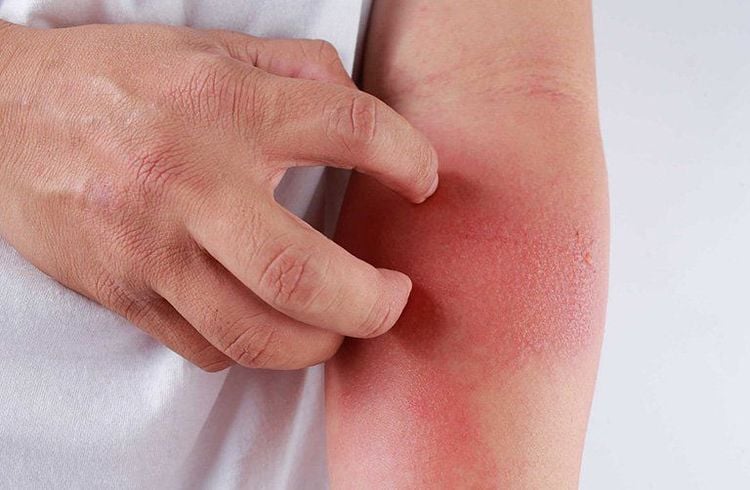
Thuốc kháng histamin sử dụng trong điều trị dị ứng
2. H1 . antihistamines
H1 antihistamines act as competitive antagonists to the histamine receptor at the target cell, because histamine cannot bind to the receptor, so it has no effect on the cell. Antihistamine H1 has the ability to distribute throughout the body's organizations including the central nervous system, causing inhibition of the central nervous system even at therapeutic doses, causing sluggishness, drowsiness, and decreased alertness. .1st generation H1 antihistamines also have anticholinergic effects at therapeutic doses, so they are good for antiemetic, anti motion sickness, but cause dry mouth, throat and nose.
Groups of H1 antihistamines First generation H1 antihistamines include 5 groups:
(1) Ethanolamine: Diphenhydramine; Doxylamine; Dimenhydrinate.
(2) Ethylenediamine: Mepramine; Methapyrilene; tripelenamine; Thonzylamine.
(3) Alkylamine: Chlopheniramine; Phenyramine; Tolpropamine.
(4) Piperazine: Buclizin; Cyclizine; Oxatomide; Cinarizin.
(5) Phenothiazines: Promethazine; Propiomazin; Dimethothiazines...
First generation H1 antihistamines were developed more than 70 years ago and are still widely used today. They act on Histamine receptors in the brain and spinal cord and in the rest of the body (called the periphery). They also act on Muscarinic, Alpha-adrenergic and Serotonin receptors. This means they are more likely to cause side effects such as sedation, dry mouth, dizziness, low blood pressure and a rapid heart rate. They are also more likely to reduce the ability to drive or use machines than the 2nd generation. Also the potential for interactions with other drugs is higher than the 2nd generation.
2nd generation H1 antihistamines Includes: 3 groups:
(1) Alkylamine: Acryvastin.
(2) Piperazine: Cetirizine.
(3) Piperidin: Astemizol, Loratadine.
Second generation antihistamines were developed in the 1980s and are less sedating than the first generation. They act on H1 receptors in the periphery and are unlikely to penetrate the brain, so are less likely to cause side effects or interact with medications. Most second-generation antihistamines do not cause drowsiness, although some (such as Cetirizine and Fexofenadine) are more likely to cause drowsiness at high doses.
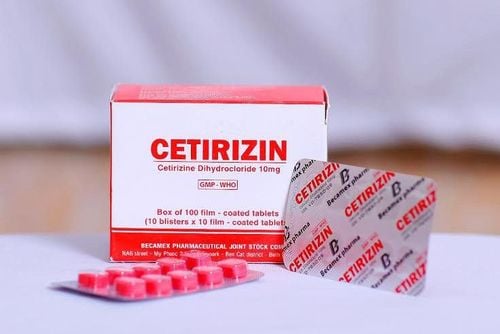
Thuốc kháng histamin H1: Cetirizine
3. Application of H1 antihistamines in treatment
3.1. Allergic Rhinitis Allergic Rhinitis is an inflammatory condition of the nose caused by the release of histamine and other mediators from IgE-mediated mast cell granulation in the nose. Medication can be used to treat this condition, with oral antihistamines being one of the main treatment options. These medications are especially helpful in cases of nasal itching, sneezing, and runny nose, but are less effective for nasal congestion.3.2. Allergic conjunctivitis Similar to allergic rhinitis, allergic conjunctivitis is an IgE-mediated allergy. This disease can appear seasonally due to pollen or year round due to allergens present during the year. Typical seasonal allergic conjunctivitis can co-occur with allergic rhinitis, so preventing allergen exposure is the first step in disease management. Oral antihistamines may be used in allergic conjunctivitis.
3.3. Acute Allergic Reactions New generation H1-antihistamines are the primary treatment of choice for mild to moderate allergic reactions due to increased mast cell granule release specific to allergen exposure. Food allergy patients should carry a less sedating H1 antihistamine to control their allergy. The use of sedating antihistamines should be avoided, especially since their sedative effects may mask worsening of the patient's consciousness due to the background allergic reaction, which is the hallmark of the onset of asthma. anaphylaxis and urgent need for adrenaline
3.4. Colds and flu Antihistamines have no role in treating colds and flu symptoms.
3.5. Prevention of motion sickness Cyclizin is a sedating antihistamine primarily used for the prevention of motion sickness. Other sedative antihistamines such as promethazine may also be used to treat nausea and vomiting caused by motion sickness.
When using H1 antihistamines, it is necessary to pay attention to the subjects that need to be considered to choose the appropriate generation of drugs such as Asthma, COPD, pregnant women, nursing mothers... liver and kidney function , drug interactions to ensure the drug is effective and does not cause adverse effects on the patient.
Please dial HOTLINE for more information or register for an appointment HERE. Download MyVinmec app to make appointments faster and to manage your bookings easily.




